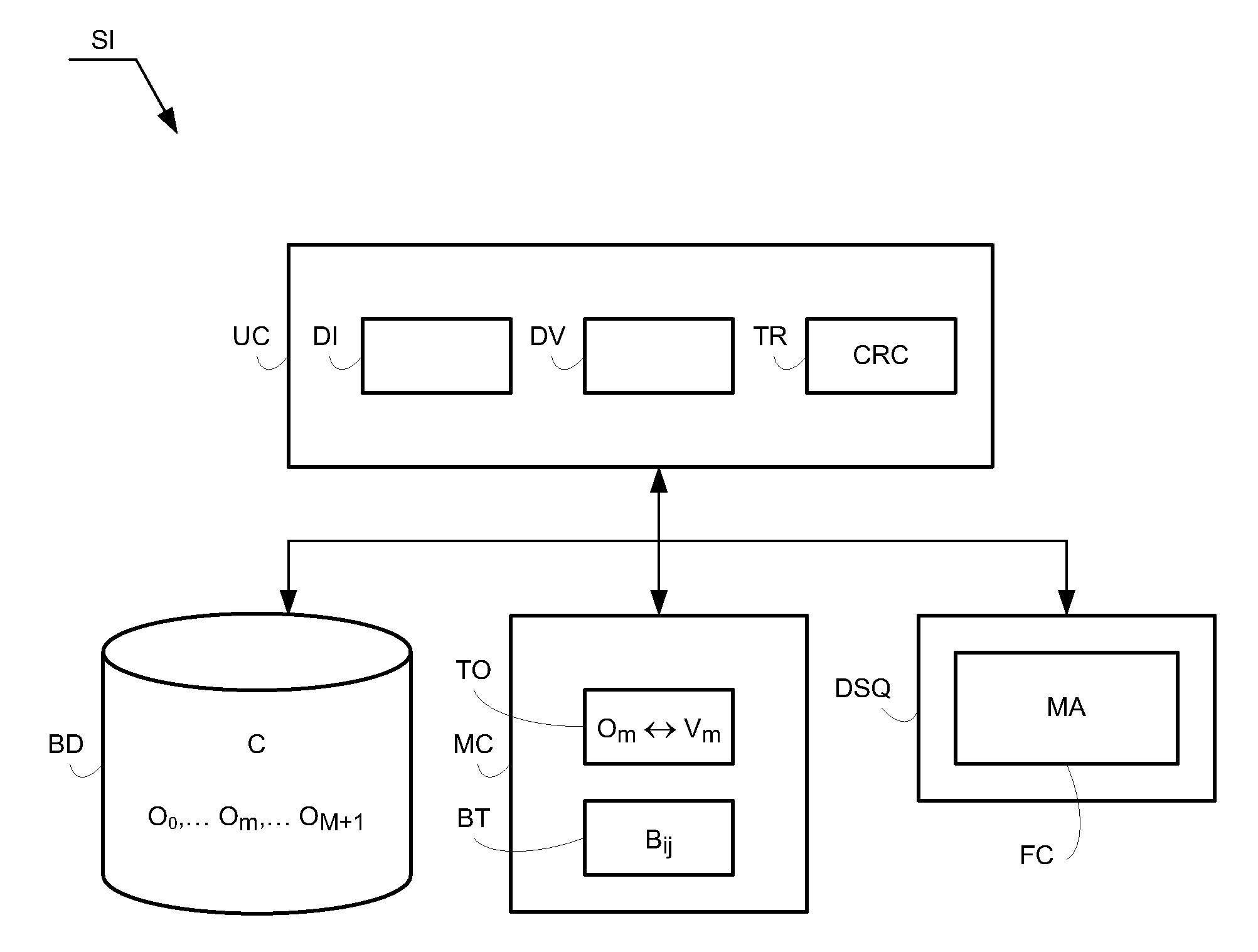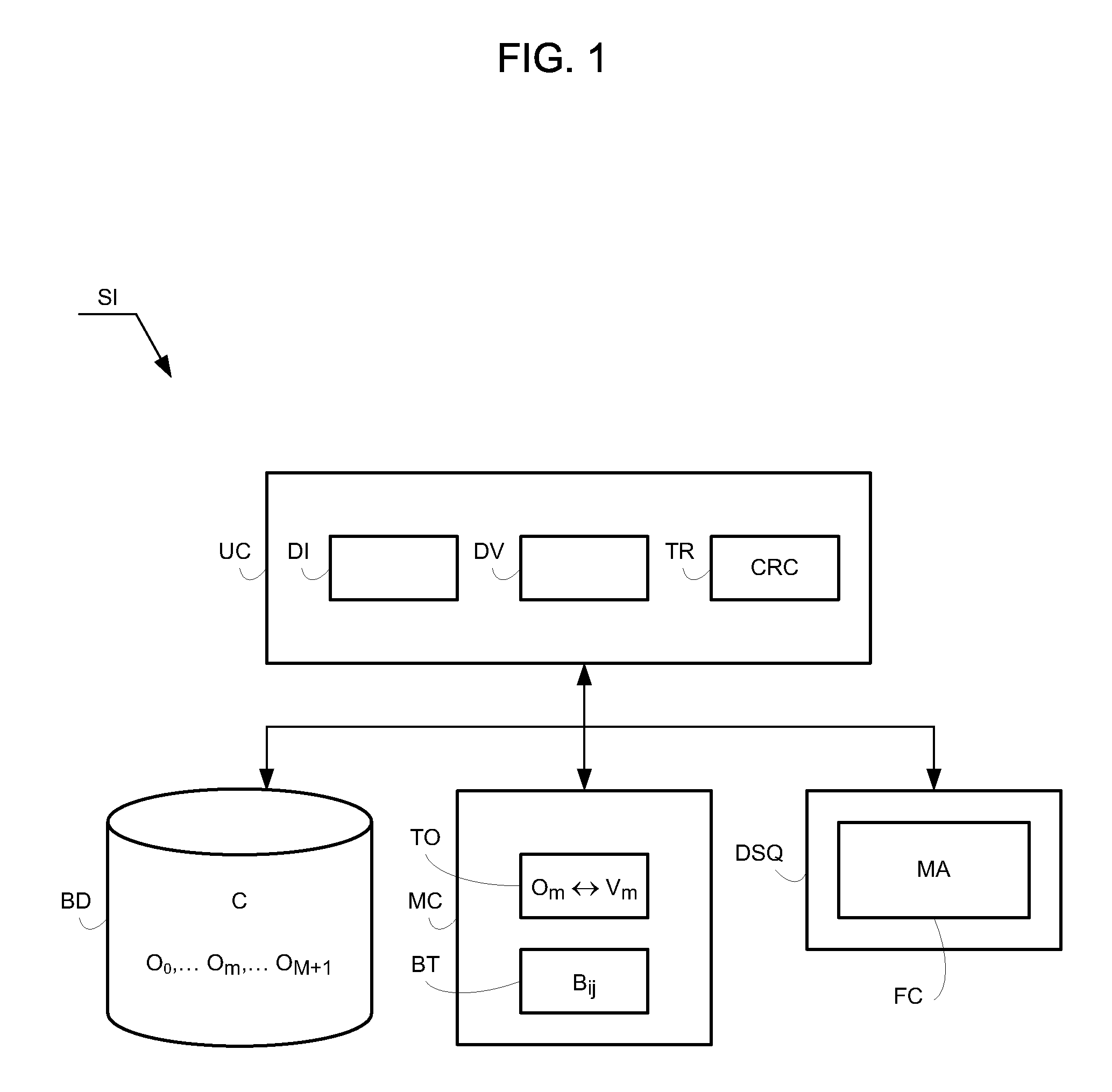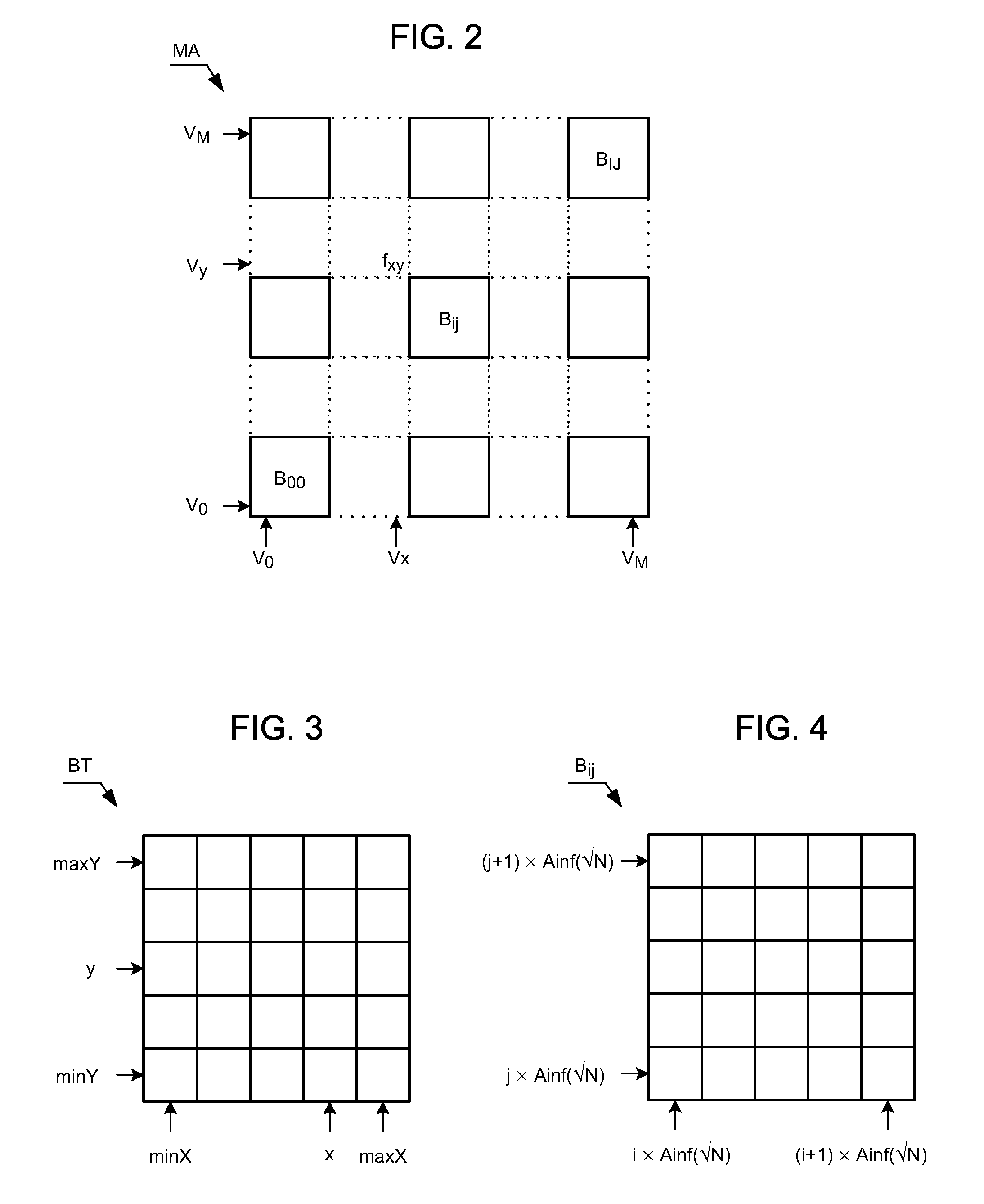Construction of a large coocurrence data file
a cooccurrence data and file technology, applied in the field of large cooccurrence data file construction, can solve the problems of inability to store large quantities of data in central random access memory, inability to achieve inability to solve the problem of large-scale cooccurrence data storage, etc., to achieve the effect of exceeding the capacity of the central memory
- Summary
- Abstract
- Description
- Claims
- Application Information
AI Technical Summary
Benefits of technology
Problems solved by technology
Method used
Image
Examples
first embodiment
[0049]The first memory is a central memory MC of the system, such as a volatile RAM memory or a non-volatile EEPROM memory. The central memory MC includes an initially empty table TO of objects for matching distinct inventoried objects Om of the corpus C by the unit UC with respective integer numerical values Vm, for example one by one in an increasing order. The central memory MC also includes a buffer block BT for compiling an inventory of and updating the co-occurrence data extracted from the corpus C of objects and the associated frequency counts. The buffer block BT, which is represented in FIG. 3, can contain only E elements and is characterized by a minimum value (minX, minY) and a maximum value (maxX, maxY).
[0050]The second memory is a storage peripheral including a storage medium such as a hard disk DSQ and having a much higher capacity than the first memory MC. Reading and writing the hard disk are discontinuous and slower than access to the central memory. The hard disk D...
second embodiment
[0067]constructing the co-occurrence data file FC is particularly suited to a low-density binary co-occurrence relationship or an n-ary co-occurrence relationship, and is implemented in the data processing system represented in FIG. 7.
[0068]In this second embodiment, the co-occurrence data file FC is a one-dimensional table TU in which each co-occurrence data item is stored in the form of a numerical index associated with an associated frequency count.
[0069]In a low-density binary co-occurrence relationship, the table TU stores triplets (Xu, Yu, fu) for which the index u is between 0 and an integer U, and the integer U is variable and initially null. (X0, Y0), . . . (Xu, Yu), . . . (XU, YU) constitute the co-occurrence data and f0, . . . fu, . . . fU constitute the associated frequency count. The triplets (Xu, Yu, fu) are stored contiguously and in a manner ordered by a total order relationship in the table TU. This total order relationship is defined so that, for two triplets (XAu,...
PUM
 Login to view more
Login to view more Abstract
Description
Claims
Application Information
 Login to view more
Login to view more - R&D Engineer
- R&D Manager
- IP Professional
- Industry Leading Data Capabilities
- Powerful AI technology
- Patent DNA Extraction
Browse by: Latest US Patents, China's latest patents, Technical Efficacy Thesaurus, Application Domain, Technology Topic.
© 2024 PatSnap. All rights reserved.Legal|Privacy policy|Modern Slavery Act Transparency Statement|Sitemap



